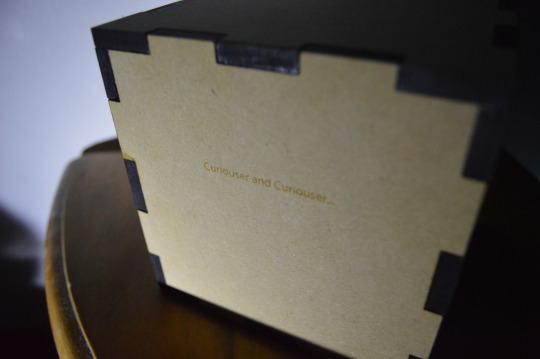Don't wanna be here? Send us removal request.
Text
POWER!!!! - weekly challenge 10
With my newly found super powers, I intend to make.
The major skill I have learnt and put into practice is confidence to get on with it. It has become much easier to sort things I need, and allow decent amounts of time to make things. Project 3 certainly sparked my interest in mercury switches and boxes o’ light so I feel I will absolutely be looking into what can be done to further my adventures with light electronics.
But that is only one series of projects. I’m pretty keen to start looking further than 3D printers and laser cutters, and MDF or acrylic for that matter. I’ve really enjoyed developing these super powers and I hope to develop them even further. One day I could use my new super powers to save a life!
0 notes
Photo

makerspace - weekly challenge 9.
http://makerspacenz.com/
This place does a bit making - we can use a few tools that they have available - the laser cutter if you’ve had their training. Otherwise they can cut things for you.
0 notes
Text
500
Through this project, the “Box o’ Light” has undergone many developments – spawned in project 2 from a light repurposing of a $1 cube found at a garage sale, it became a fully constructed cube from the MDF to the PVA. A cube with a significant purpose too, which is more than the sole purpose of the last cube (basically a box with a light shining from it). The combination of these two projects reflect some of the ideologies behind the maker movement.
From completing my second “Box o’ Light” I realised iteration’s place in the maker movement, but these iterations are not limited to physical appearance and construction – they can move to iterations of the ideas behind the making of the product, ideas behind the reason of the product’s existence. This value of iteration in the maker movement is extremely relevant to the world outside of maker culture – something doesn’t work so you change it up a little and try again. I particularly noticed this half way through project 3. The outside of a box had been laser cut and I tried gluing it together. This gluing together didn’t work, but changing the box design required me to change the whole idea behind my product, but it was necessary to do so, and in this iteration I ended up with an undeniably better outcome.
“There are three states of being. Not knowing, action and completion” (Pettis, Stark, 2010-2014).
In my view of maker culture, this statement holds true. So far I have “not known”, taken action, not known again, taken a bit more action, then completed what I set out to do. Again what I learned in our last project was reinforced – the importance of sharing ideas. At many points through this final product when I have “not known”, talking to others has been extremely helpful in moving on to the “action” section, and thus the completion stage.
It’s not wrong to think that making can be seen as a journey. It certainly is a cliché, but that signifies the truth behind it. Again this becomes an ideology in the maker movement that implies being shaped by experience – you don’t know how to do something until you do it, then you do know how to do it. This idea already exists outside of maker culture, but the maker movement offers a very practical and literal expression of this idea.
All in all, this paper and this project in particular allowed me to investigate something I had close to zero clue about – I “did not know”. Throughout, I became more aware of ways that I could apply ideals from the maker movement into my life outside of making.
Reference
Pettis, B., Stark, K. (2010-2014). The Cult of Done Manifesto. Retrieved from http://www.manifestoproject.it/bre-pettis-and-kio-stark/
0 notes
Photo





Some selling features of Box o’ Light take particular note of the easily accessible battery pack. Nobody wants to waste time trying to get batteries out of small enclosures - the raised platform avoids this hassle.
0 notes
Photo




Box o’ Light - Incorporation of Alice in Wonderland and a box with a puzzling interior.
0 notes
Photo

BreadBro
https://www.kickstarter.com/projects/breadbro/breadbro?ref=category_featured
Integrating an Arduino and Breadboard. “We developed BreadBro after realizing a crucial fact: the Arduino platform, while incredibly useful, is not perfectly suited to students, novices, and other people with no experience developing technology.“ In the production and distribution of this product, they have very carefully set out where they are gathering their components from, have put more than one failsafe in place and they have calculated distribution costs into their overall product price.
0 notes
Photo

Laserlight
https://blaze.cc/laserlight/
While possibly slightly more industrial than a standard maker Kickstarter project, this product incorporates innovation on many levels. The creators have identified that there is a common cause to 79% of cycling incidents – drivers moving into bikers’ paths. It aims to reduce this percentage by having a laser light to connect to your bicycle that projects a universal bike symbol onto the road ahead of the biker. This is innovation one – locating an issue and finding a viable solution to it, but it also innovates in its build quality – the producers are aware of the conditions bikers bike in, and they have catered to that, intending to have a vibration-proof, waterproof light to make bikers safer on the road.
How it incorporates these elements of technological innovation is one of the major influences in its success.
0 notes
Photo








The process and the product, in no particular order.
0 notes
















